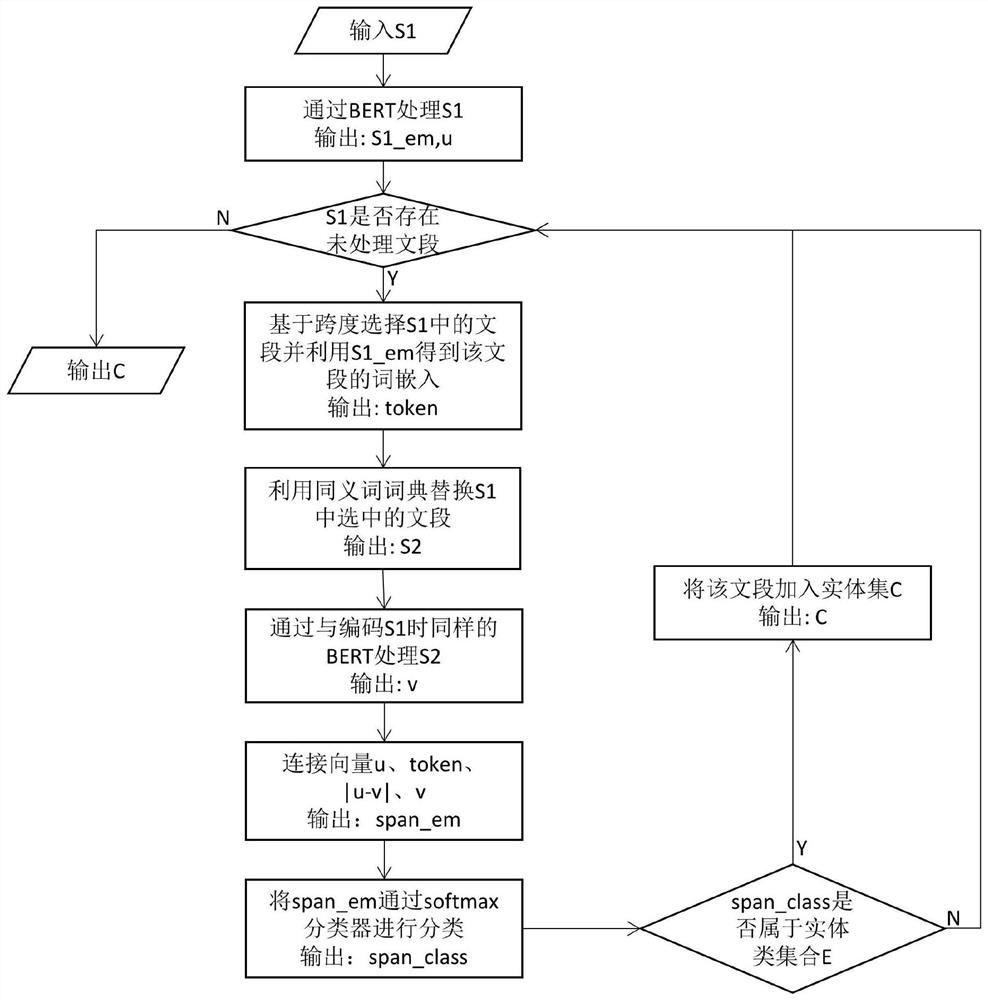Named entity recognition method based on deep learning
A named entity recognition and deep learning technology, applied in character and pattern recognition, semantic analysis, instrumentation, etc., can solve problems such as inaccurate entity classification, difficulty in identifying nested entities, etc., and achieve the effect of improving the collapse problem and improving the accuracy rate
- Summary
- Abstract
- Description
- Claims
- Application Information
AI Technical Summary
Problems solved by technology
Method used
Image
Examples
Embodiment
[0050] refer to Figure 4 , the identification method of the present invention takes "the bank formulates business behavior norms for employees" as an example.
[0051] Step 1, build a dictionary of synonyms D, in which the synonym of the word "behavior" is "action";
[0052] Step 2, get entity class set E={"organization", "name", "address", "company", "government", "book", "game", "movie", "position", "scene"} ;
[0053] Step 3: Perform comparative learning pre-training on the BERT model that has completed domain pre-training, and obtain the pre-trained Pre_Train_BERT. The specific process of using positive samples and negative samples for training can refer to figure 2 and image 3 ;
[0054] Step 4, perform fine-tuning training on the named entity recognition task for the deep learning model used, and obtain the Fine_Tuning_BERT encoder and the trained softmax classifier;
[0055] Step 5, take the sentence "the bank formulates a code of business conduct for employees"...
PUM
 Login to View More
Login to View More Abstract
Description
Claims
Application Information
 Login to View More
Login to View More - R&D
- Intellectual Property
- Life Sciences
- Materials
- Tech Scout
- Unparalleled Data Quality
- Higher Quality Content
- 60% Fewer Hallucinations
Browse by: Latest US Patents, China's latest patents, Technical Efficacy Thesaurus, Application Domain, Technology Topic, Popular Technical Reports.
© 2025 PatSnap. All rights reserved.Legal|Privacy policy|Modern Slavery Act Transparency Statement|Sitemap|About US| Contact US: help@patsnap.com



